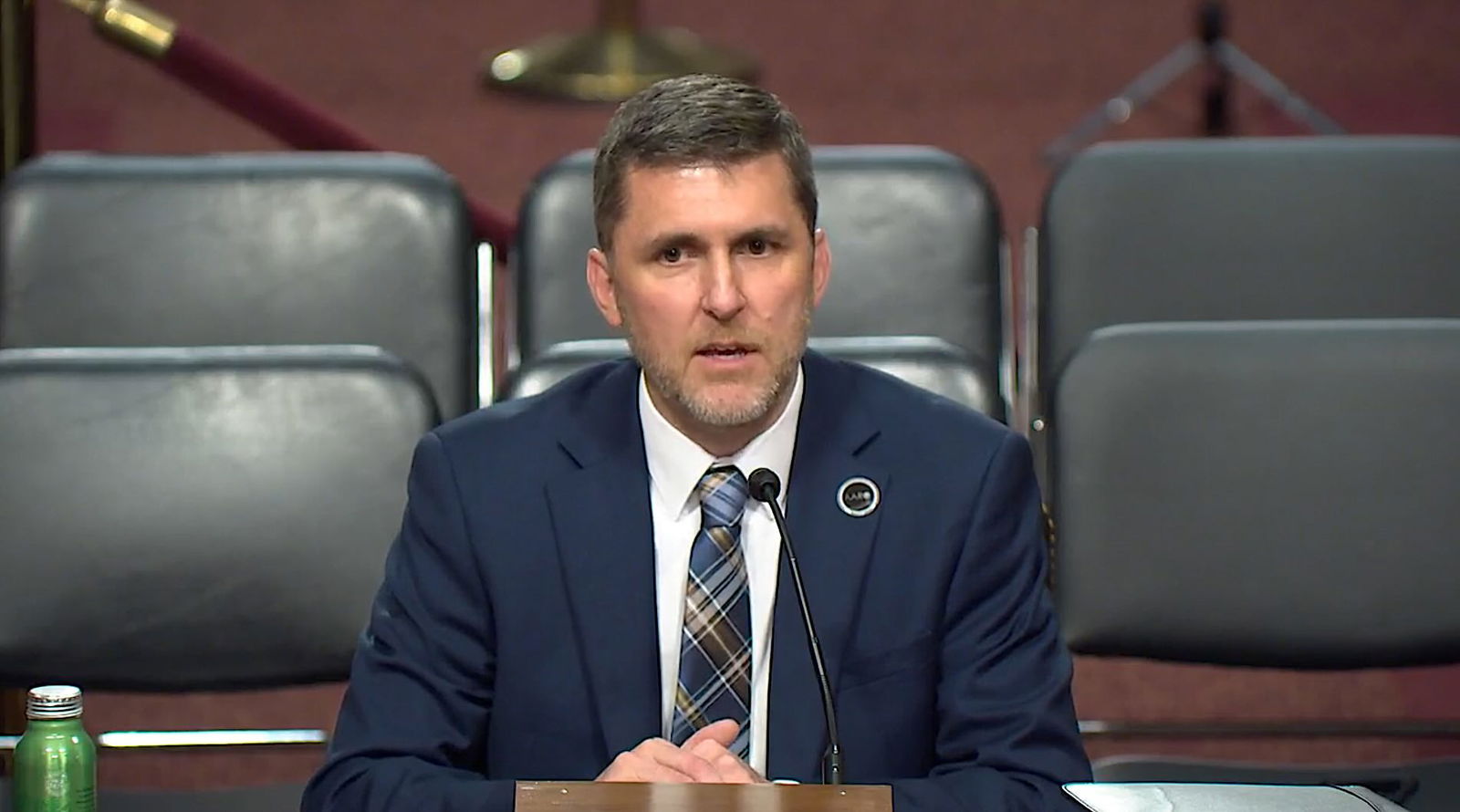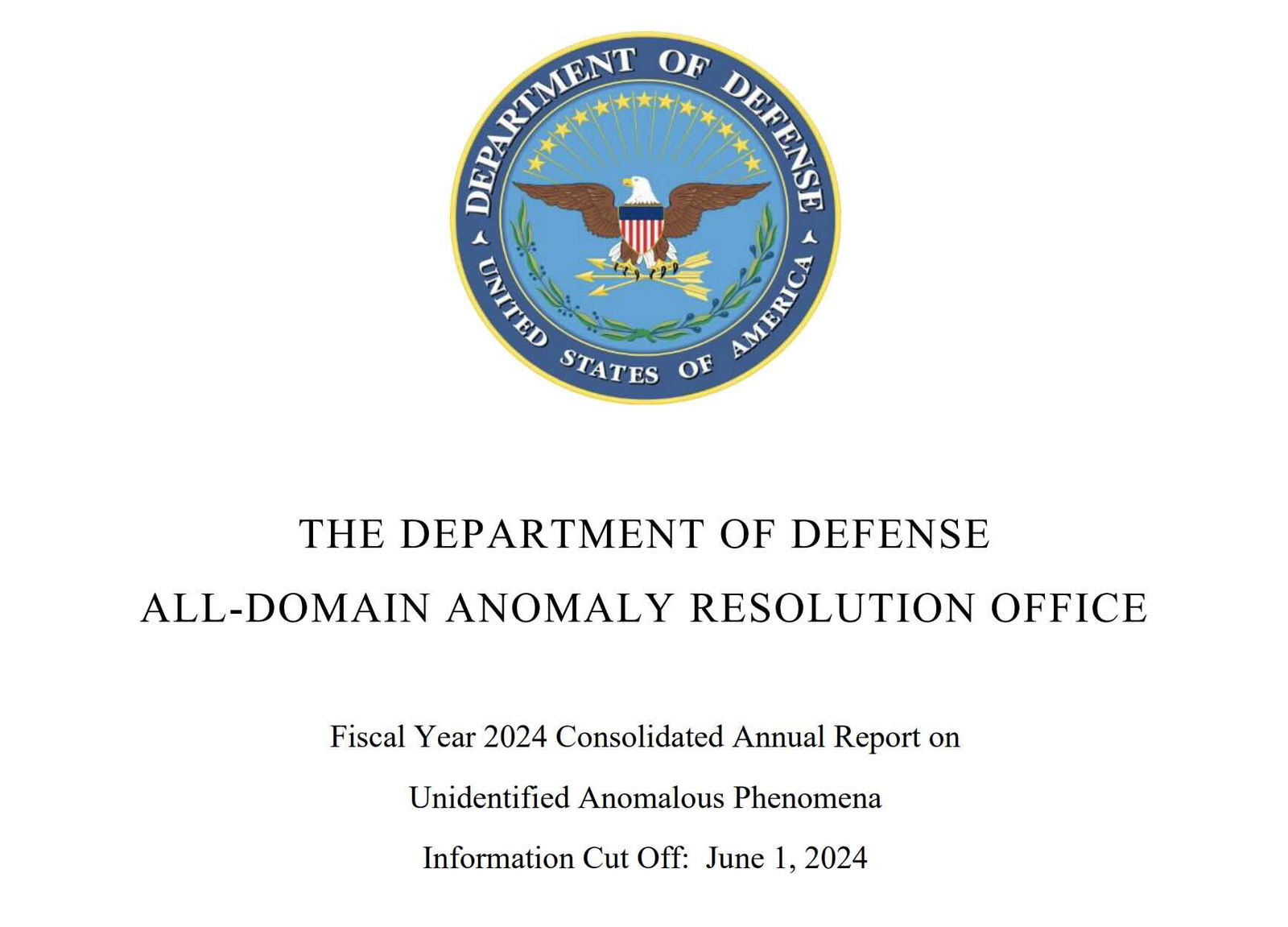

Welcome to this week’s installment of The Intelligence Brief… within the last week, the release of a new official report by the Pentagon’s All-domain Anomaly Resolution Office (AARO), as well as a brief Senate hearing featuring its new director, Dr. Jon Kosloski, have put the DoD’s UAP investigations back into the spotlight. But what do early indications tell us about AARO’s direction under its new leadership? In our analysis, we’ll be looking at 1) some of the intriguing phenomena AARO has recently said it’s investigating, 2) examples of unusual cases Kosloski recently described before lawmakers, and 3) why we now know AARO can’t explain some of its best cases, and why that’s important.
Quote of the Week
“We do have some very anomalous objects.”
– Dr. Jon Kosloski, Director, All-domain Anomaly Resolution Office
Latest News: In recent news from The Debrief, a theoretical astrophysicist believes he had solved a baffling mystery involving the mysterious Crab Nebula. Also, a new study by Colorado geologists adds weight to the snowball Earth hypothesis. You’ll find links to all our recent stories at the end of this week’s newsletter.
Podcasts: In podcasts this week, on The Micah Hanks Program, we look at all the latest findings from the 2024 annual AARO report, as well as the ongoing controversy surrounding the alleged “Immaculate Constellation” program. Elsewhere, on the latest installment of The Debrief Weekly Report, Kenna and Stephanie decide to take a dip in a Martian ocean and discuss China’s Mars expedition and its discovery. You can find all our past episodes on The Debrief’s Podcasts Page.
Video News: On the latest episode of Rebelliously Curious, Chrissy Newton is joined by Dr. Michael Glawson, a philosopher specializing in science, philosophy of religion, and ethics, helps us dive deep into the intersection of UAPs and psychology. Be sure to check out other great content from The Debrief on our official YouTube Channel.
With that all behind us, it’s time we shift our attention to the recent revelations coming from the Pentagon’s All-domain Anomaly Resolution Office, and why current indications may show that the U.S. government’s official investigations into aerial mysteries warrant renewed interest.
The All-domain Anomaly Resolution Office is Back in the Spotlight
Over the last week, the DoD’s All-domain Anomaly Resolution Office (AARO) has been back in the spotlight, with the release of an annual report on UAP (as discussed last week in The Intelligence Brief), followed by a Senate hearing on Tuesday which marked the first public appearance of AARO’s new director, Dr. Jon Kosloski.
Although many immediately took to social media and expressed criticism of Kosloski, AARO’s recent report, and the Senate hearing—particularly after Kosloski showcased AARO’s findings involving a pair of leaked U.S. government videos which he said the office had successfully resolved “with high confidence”—there are still several notable details that have emerged within the last week that suggest AARO may be headed in a new, more promising direction.
1) AARO is Currently Investigating Some Intriguing Phenomena
In AARO’s Fiscal Year 2024 Consolidated Annual Report on Unidentified Anomalous Phenomena released last week, the office revealed that while many reports of UAP can be explained and AARO has found “no evidence of extraterrestrial beings, activity, or technology,” there are still some intriguing phenomena its analysts are investigating.
Among the more unusual and concerning phenomena recently investigated, AARO’s new report describes three cases that involved pilots “being trailed or shadowed by UAP,” which have not been attributed to foreign adversary activity.


Out of hundreds of reports it has collected, AARO says there are just “21 cases received this reporting period that merit further analysis based on reported anomalous characteristics and/or behaviors.” Given that AARO has a separate reporting category that involvs reports that “lacked sufficient data to facilitate analysis,” one could infer that these 21 reports would seemingly fall into a category of cases where sufficient data was obtained that could aid in their study and analysis.
“To be clear, AARO does not believe that every object is a bird, a balloon, or a UAV,” said Dr. Jon Kosloski, AARO’s new Director, during a Senate hearing earlier this week, where he further clarified AARO’s position on its investigations by adding that “we do have some very anomalous objects.”
2) AARO’s New Director Has Shared Some Unusual UAP Cases His Office is Evaluating
During this week’s hearing, Dr. Kosloski was asked by U.S. Senator Kirsten Gillibrand about UAP cases that AARO is currently investigating that have not yet been resolved. Kosloski responded by detailing a series of unresolved cases, the first of which involved a large orange orb observed by a law enforcement officer in the Western United States that was hovering several hundred feet above the ground. When the officer approached the area, he noticed a second object, described as “blacker than black” and roughly the size of a car, hovering closer to the ground.
“As he got within 40 to 60 meters, the object tilted up 45 degrees and shot vertically upwards—10 to 100 times faster than any drone he had ever seen,” Kosloski explained. The object emitted bright red and blue lights, illuminating the inside of the officer’s vehicle, and made no detectable sound as it departed the area.


Another unresolved case featured a stationary cylinder hovering over a U.S. facility in the Southwest before abruptly vanishing. Witnessed by government contractors, the object was described as the size of a commercial airplane and accompanied by an intense white light. “A stationary object that large—unless it’s a blimp—is unusual,” Kosloski said. “But its sudden disappearance is something we can’t explain.”
Finally, Kosloski also described an instance where an aircraft filmed a smaller object passing at high speed between it and a parallel aircraft, which AARO may be close to resolving. Nonetheless, the descriptions of the other two cases Kosloski provided were intriguing, and seemingly involved observations of objects that did not easily conform to known phenomena.
3) AARO Simply Doesn’t Know What Some of These Phenomena Are
During a media call last week following the release of AARO’s new report, Kosloski told reporters that his office currently has “several particularly interesting cases,” seemingly describing the three incidents recounted during this week’s Senate hearing, and others like them.
Kosloski said AARO is “working with our partners to downgrade several of those cases, so we can talk about them publicly,” though adding that “there are interesting cases that I, with my physics and engineering background and time in the IC, I do not understand.”
“And I don’t know anybody else who understands them either,” Kosloski added.
Although it’s still early on, Kosloski’s recent statements appear to mark a notable shift in AARO’s approach toward UAP investigations. Earlier this year, the release of an error-ridden historical report by the office was met with significant criticism, one of several issues associated with its past leadership that drew criticism from UAP proponents and skeptics alike.
While many online have expressed similar criticism of AARO’s recent report and Kosloski’s statements provided to lawmakers earlier this week, it seems clear that, when viewing them objectively, AARO’s current leadership and approach are showing significant signs of improvement. Let’s hope that is a trend that continues.
That concludes this week’s installment of The Intelligence Brief. You can read past editions of our newsletter at our website, or if you found this installment online, don’t forget to subscribe and get future email editions from us here. Also, if you have a tip or other information you’d like to send along directly to me, you can email me at micah [@] thedebrief [dot] org, or Tweet at me @MicahHanks.


Here are the top stories we’re covering right now…
- Department of Energy Study Directly Refutes Alternate Theories of Gravity, Affirms Einstein
DOE study scanning over 6 million galaxies and quasars offers support for general relativity while refuting alternate theories of gravity.
- Hurricane Forecasting Could Soon Get a Major Upgrade with Help from Machine Learning
Researchers have unveiled a new machine-learning approach that could transform the accuracy of hurricane forecasting.
- “We Do Have Some Very Anomalous Objects,” New Director of Pentagon’s UAP Investigations Tells Lawmakers
The director of the Pentagon’s All-domain Anomaly Resolution Office confirmed to lawmakers on Tuesday that the U.S. is investigating “some very anomalous objects.”
- Scientists Say Something Unusual Was Detected Just Before the Massive Hunga Tonga Volcanic Eruption
Seismic data collected before the massive Hunga Tonga eruption in 2022 could point to a new kind of early warning system for such events.
- The FDA Wants to Curb Controversial Animal Testing. Here’s How They Plan to Do It.
The US Food and Drug Administration is pushing ahead with new measures aimed to help reduce its reliance on live animal subjects.
- Astrophysicist Believes He’s Solved ‘Baffling’ Zebra Patterned Signal Coming From the Crab Nebula
A theoretical astrophysicist believes he had solved the baffling mystery of the zebra patterned signal coming from the Crab Nebula.
- Geologists Uncover Clues in Colorado That Lend New Weight to Snowball Earth Hypothesis
A recent study by Colorado geologists adds weight to the snowball Earth hypothesis, providing what may be the best evidence yet of our planet’s a frozen past.
- Discovery Challenges Einstein’s General Relativity as Mysterious Acceleration of Universe’s Expansion Suggests Unknown Physics
An international research team’s new calculations of the distortion of time and space presents new challenges to predictions in Einstein’s general relativity.
- Neutrinos Can’t Travel Faster Than Light. Here’s What That Means for Black Holes
Faster-than-light neutrinos would be able to escape from the spacetime prisons of black holes. Harvard astronomer Avi Loeb explores the cosmic consequences.
- First-Ever Discovery of Amber in Antarctica Reveals Continent Had Trees 90 Million Years Ago.
Scientists have discovered the first-ever sample of fossilized tree resin, known as amber, on Earth’s southernmost continent of Antarctica.
- Researchers Name New Snail Species After ‘Lord of the Rings’ Characters
Two newly discovered species of freshwater snails from Brazil have been named after characters from J.R.R. Tolkien’s The Lord of the Rings.
- The 2024 Congressional UAP Hearing
This week on The Micah Hanks Program, we provide a full analysis of the recent 2024 congressional UAP hearing.
- Neutron Star Collision Leads to the Smallest Black Hole Ever Recorded
Astrophysicists observing the collision of two neutron stars have detected the smallest black hole ever observed.
- Americans Are More Likely to Choose News That Supports Their Beliefs. This New Study Reveals Why.
A new study suggests people often prefer news that aligns with their existing beliefs, a tendency known as “selective exposure.”
- Houston, We Have a Problem: NASA and Roscosmos Debating Cause of Air Leak Aboard the International Space Station
The International Space Station (ISS) has reportedly been leaking air for the past five years from a portion of the station operated by Russia.
- Do Animals Feel More Than We Think? Emory Survey Unveils Expert Opinions on Animal Emotions and Consciousness
A new survey published in Royal Society Open Science is offering a rare snapshot into current scientific thinking about the emotions and consciousness of animals.
- James Webb Space Telescope Finds Stunning Evidence for Alternate Theory of Gravity
New discoveries from NASA’s James Webb Space Telescope offer unexpected support for an alternate theory of gravity first proposed in 1998.
- Expansive Echolocation Maps of Bats Unveiled in Groundbreaking New Study
New research reveals bats’ echolocation maps are far more expansive than previously thought, allowing them to navigate journeys spanning several kilometers.
- Scientists Defy Conventional Physics By Revealing That a Laser Beam Can Cast a Shadow
Researchers create a visible shadow using only a laser beam, an achievement that seemingly defies conventional physics.
- Quest for Fabled ‘Island of Stability’ Sends Physicists on a Hunt for Mysterious Double Magic Nuclei
Exploration of “double magic nuclei” is advancing nuclear physics and materials science through physicist’s understanding of nuclear bonds.
- Scientists Have Created a New App That Could Help Users Reduce Negative Thoughts
Scientists at Harvard University have developed an app that focuses on breaking cycles of negative thoughts that contribute to depression.
- Study Finds People with Traditional Paranormal Beliefs Feel More Stressed Than Those with New Age Varieties
People with traditional paranormal beliefs report more feelings of stress and worse coping than those with new-age paranormal beliefs.
- 2024 UAP Annual Report Released in Wake of Congressional Hearing Addressing Claims of U.S. Secret Programs
This week, we cover the release of the 2024 UAP annual report by the DoD following a recent congressional hearing on the topic.
- Can Humanity Sustain Itself Without Destroying the Earth? New Study Examines Ways to Prevent Ecological Collapse
New research examines if its possible for humanity to continue to thrive on Earth without triggering an ecological collapse.
- 12,000-Year-Old Stones May Be Earliest Evidence of This Transformative Technology
A new analysis of 12,000-year-old stones from Israel shows that they may be the earliest evidence of this society-changing technology.
- Children’s Animated Movies May Promote Bias Through Their Depiction of These Characters, Study Says
New research says animated films may promote bias by depicting characters with strabismus as villains, sidekicks, or bumbling fools.
- Former Officials Warn Lawmakers of Alleged Secret UAP Programs Operating Beyond Congressional Oversight
A group of former government officials and disclosure advocates recently told lawmakers the U.S. is not being transparent enough on UAP.
